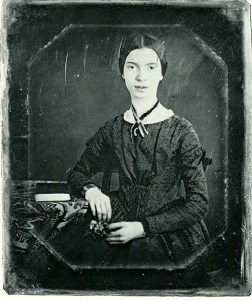A summary of a classic Dickinson poem – analysed by Dr Oliver Tearle
‘A Light Exists in Spring’ is not Emily Dickinson’s best-known poem, but it is a fine poem about the spring season, so we wanted to offer a few words of analysis of it here. The poem doesn’t appear to be online anywhere already in the ‘correct’ form – i.e. how it’s rendered in the Complete Poems, with the right words capitalised and those trademark dashes in the right place. Here is ‘A Light Exists in Spring’ as it appears in the Complete Poems.
A Light exists in Spring
Not present on the Year
At any other period –
When March is scarcely here
A Color stands abroad
On Solitary Fields
That Science cannot overtake
But Human Nature feels.
It waits upon the Lawn,
It shows the furthest Tree
Upon the furthest Slope you know
It almost speaks to you.
Then as Horizons step
Or Noons report away
Without the Formula of sound
It passes and we stay –
A quality of loss
Affecting our Content
As Trade had suddenly encroached
Upon a Sacrament.
It’s difficult to paraphrase an Emily Dickinson poem – even leaving aside the dangers of paraphrase more generally  – but here at Interesting Literature we like a challenge. So, to summarise this poem: ‘There is a light in spring that isn’t present the rest of the year. No sooner has March arrived than there is a distinctive colour on the horizon, on the distant hills, which can’t have its magic destroyed by science, but which we, as humans, feel. This light lingers on the lawn, and reveals to us trees that are far away on distant slopes; the light is so powerful it almost seems to speak to me. As time passes, this light silently passes away, leaving us behind. The loss of the light affects the level of contentedness we feel, much as trade or business, if it intruded on the religious sacrament, would rob it of some of its divinity.’
– but here at Interesting Literature we like a challenge. So, to summarise this poem: ‘There is a light in spring that isn’t present the rest of the year. No sooner has March arrived than there is a distinctive colour on the horizon, on the distant hills, which can’t have its magic destroyed by science, but which we, as humans, feel. This light lingers on the lawn, and reveals to us trees that are far away on distant slopes; the light is so powerful it almost seems to speak to me. As time passes, this light silently passes away, leaving us behind. The loss of the light affects the level of contentedness we feel, much as trade or business, if it intruded on the religious sacrament, would rob it of some of its divinity.’
In short, then, in ‘A Light Exists in Spring’ we have a nature poem but also a religious poem, thanks to that final stanza. But what are we to make of Dickinson’s reference to science in the poem’s second stanza?
A Color stands abroad
On Solitary Fields
That Science cannot overtake
But Human Nature feels.
Science cannot supersede or outstrip the beauty of the spring sunlight: although Dickinson doesn’t go as far as Keats in his Romantic distaste for science’s desire to ‘unweave a rainbow’ (a poetry/science opposition that Richard Dawkins sought to challenge in his book, Unweaving the Rainbow), this stanza acknowledges that the human heart is alive to things which science can merely understand – not that understanding and analysing the natural world is not important, of course, but that human interaction with the world is far more complex and ineffable than scientific analysis of nature. Note how ‘Human Nature’ draws a Blakean link between mankind and the natural world: our human nature is what comprehends nature. (The fact that ‘feels’ is an almost exact replication of ‘Fields’ further consolidates this close bond between nature and the human.)
If you found this short analysis of ‘A Light Exists in Spring’ interesting, you can own all of Dickinson’s wonderful poetry in a single volume: we recommend the Faber edition of her Complete Poems. Discover more about Dickinson’s classic poems with ‘I died for Beauty, but was scarce‘, ‘One need not be a Chamber to be Haunted‘, our analysis of ‘I heard a Fly buzz – when I died’, and ‘I cannot live with You‘.
The author of this article, Dr Oliver Tearle, is a literary critic and lecturer in English at Loughborough University. He is the author of, among others, The Secret Library: A Book-Lovers’ Journey Through Curiosities of History and The Great War, The Waste Land and the Modernist Long Poem.


, a meeting of two worlds –